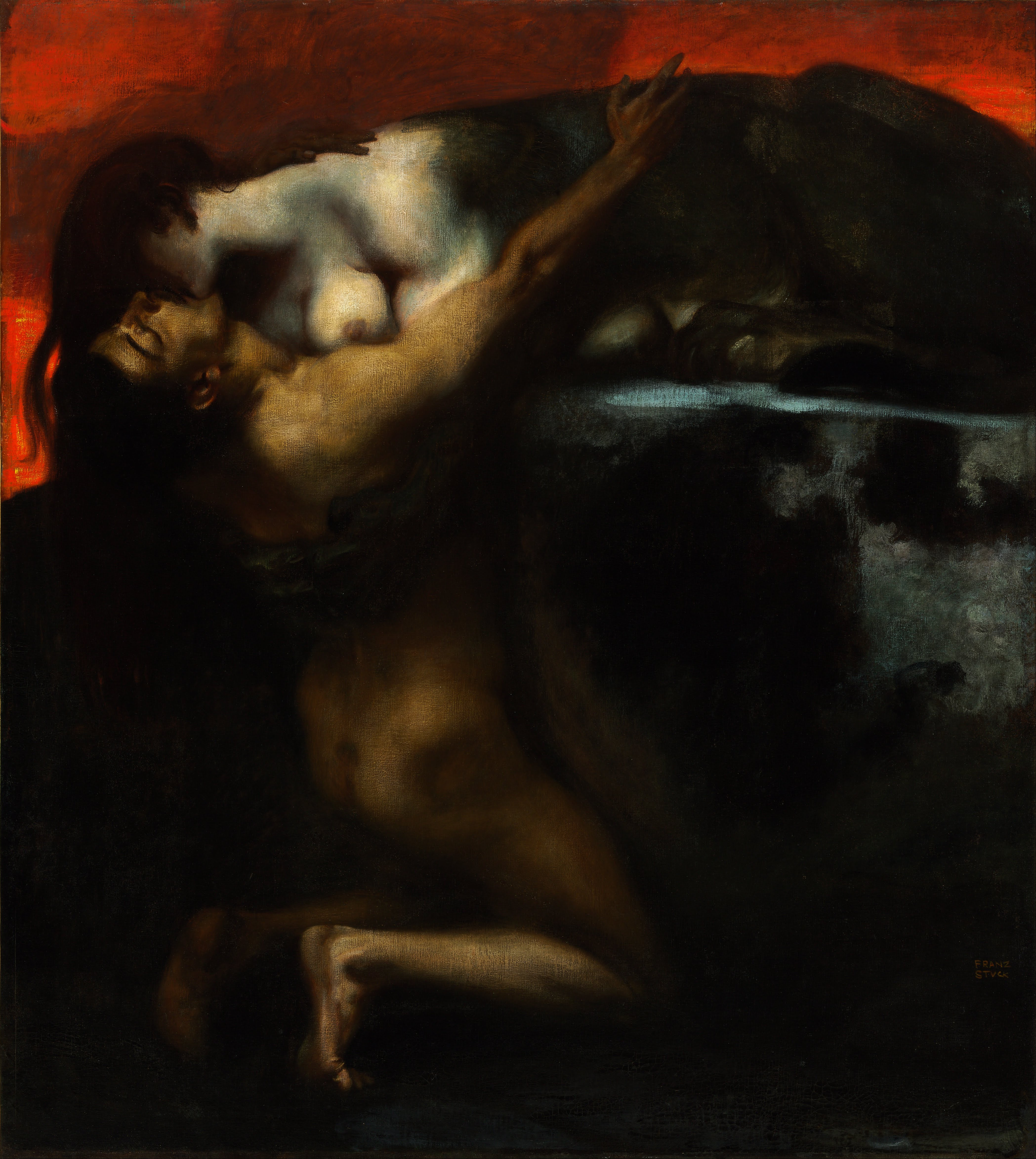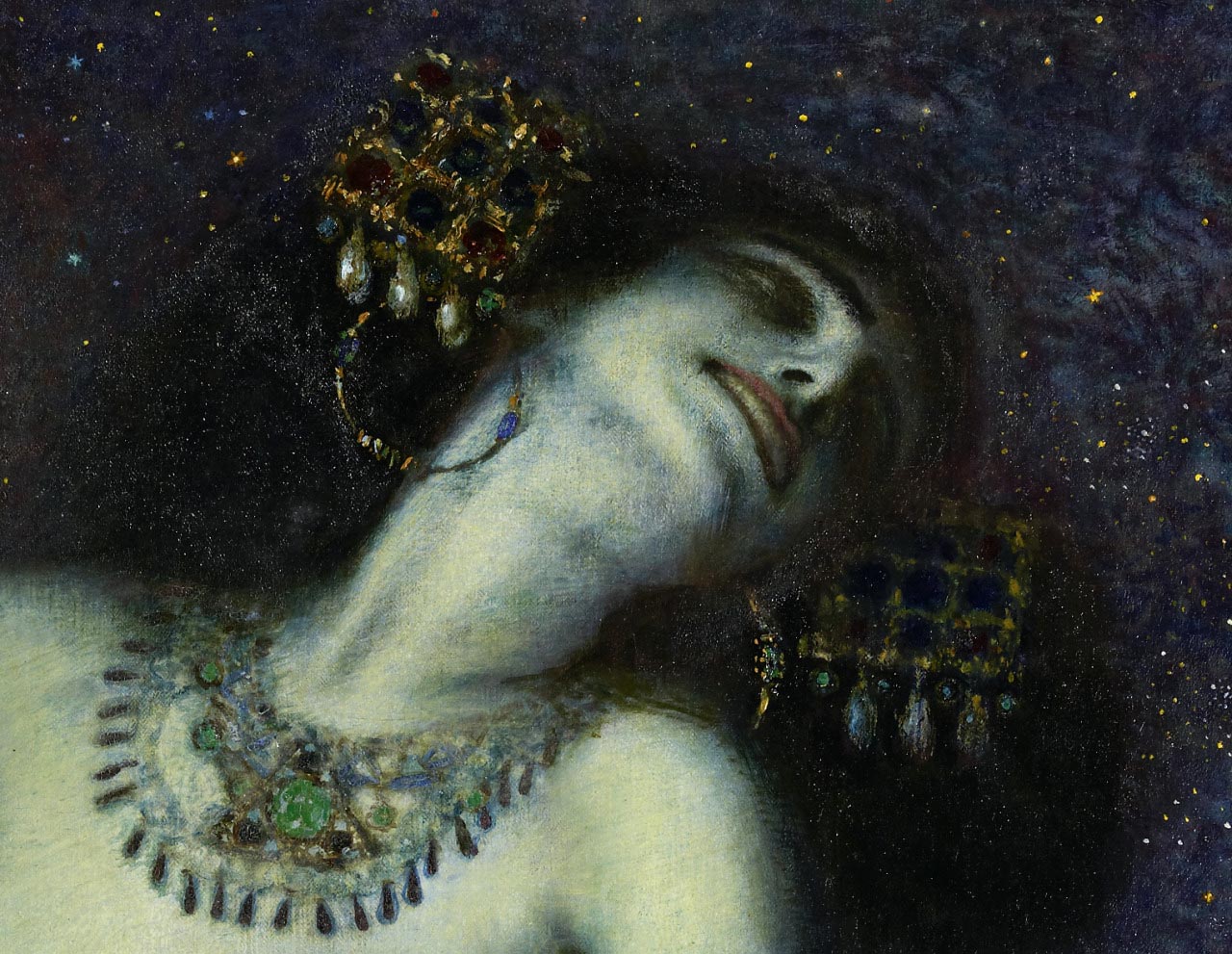



The Kiss of the Sphinx
oil on canvas • -
This painting is grand melodrama painted in a blaze of fiery red. Locked in a passionate kiss, the sphinx presses her lips against the man's like a vampire, as if to suck the life out of him. It was the poem by Heinrich Heine in the foreword to his Buch der Lieder (3rd edition, 1839) that inspired Stuck to paint this triumph of woman over man.
The marble image came alive,
Began to moan and plead –
She drank my burning kisses up
With ravenous thirst and greed.
She drank the breath from out my breast,
She fed lust without pause;
She pressed me tight, and tore and rent
My body with her claws.
In the 19th century the sphinx was a popular theme in literature and the visual arts. The many images can be divided into four basic types: the Egyptian sphinx, the Greek sphinx, the sphinx as femme fatale, and the mystical sphinx. In these four types, and the various hybrid forms, we see how in their approach to the sphinx the various artists all depicted a different inner struggle: the battle between animal instincts and the intellect, the eternal conflict between man and woman, or the search for the meaning of human existence.
Franz von Stuck gave us a more explicit portrayal of the femme fatale in Der Kuss der Sphinx. She is a buxom temptress, a kind of vampire who, with her kiss of death, seems to be sucking the life's blood out of a naked young man. The sphinx as femme fatale reached its high point around 1900 in a total identification of the woman with the sphinx.The alleged 'animal' nature of women was often depicted quite graphically in mythological half-human figures like the sphinx. Symbolism lent the sphinx an erotic aura, and further developed the figure as the embodiment of the femme fatale. This was a reference both to the eternal problem of the balance of power between men and women, and to women's changing role in society, which was often seen as a threat to men. For the male artist, the suggestion of female domination held an ambivalent attraction. By giving the Sphinx a contemporary appearance, the artist points up the treacherous side of the modern woman.
 Franz von Stuck
Franz von Stuck